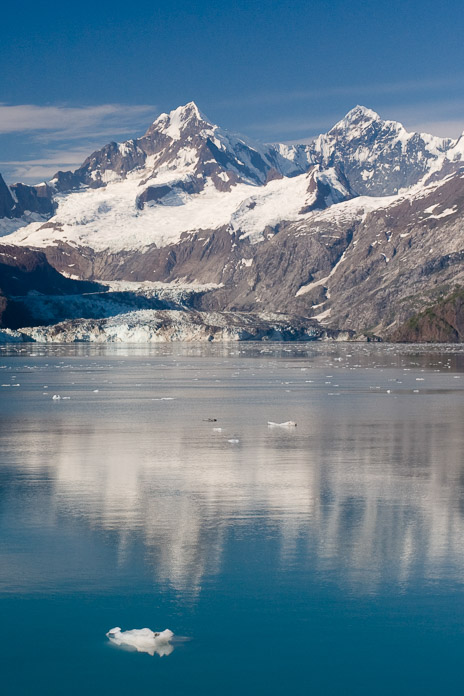
Johns Hopkins Glacier(约翰斯·霍普金斯冰川)不仅仅是在Glacier Bay(冰川湾)而且是世界上的为数不多的几个前进冰川之一。这就引发了一个问题,“当它附近的冰川都在消退的时候,这个冰川是如何前进的呢?”答案就是小气候。很有可能是Johns Hopkins Glacier(约翰斯·霍普金斯冰川)的积冰区的海拔足够高,气候的变暖实际上带来了比以前更多的降雪。冰川增长的新冰比它失去的冰多,这就给冰川提供了前进的动力。毗邻地区没有那么多的降雪,因此来自毗邻地区的冰川在继续融化和消退。
El Johns Hopkins Glacier (glaciar Johns Hopkins) es uno de los pocos glaciares que avanzan, no sólo en Glacier Bay, sino en todo el mundo. Esto plantea la pregunta: "¿Cómo puede avanzar este glaciar cuando los glaciares vecinos se están retrayendo?" La respuesta es: microclimas. Es probable que el área de acumulación del glaciar Johns Hopkins tenga bastante elevación como para que las condiciones de calentamiento le proporcionen más nieve que antes; esto desequilibra la pérdida de hielo a medida que el glaciar fluye hacia tierras bajas, permitiendo que avance. Las áreas adyacentes no reciben suficiente nieve y, por lo tanto, sus glaciares continúan derritiéndose y retrayéndose.
Johns Hopkins Glacier is one of the few glaciers, not just in Glacier Bay, but in the world, that is advancing. This begs the question, “How can this glacier advance, when neighboring glaciers are retreating?” The answer is microclimates. It is likely that the Johns Hopkins Glacier accumulation area is high enough in elevation that warming conditions are actually providing more snow than previously; this overbalances the ice loss as the glacier flows to the lowlands, allowing the glacier to advance. The adjacent areas are not receiving as much snow, and therefore the glaciers issuing from them continue to melt and withdraw. Photographer: Sean Neilson